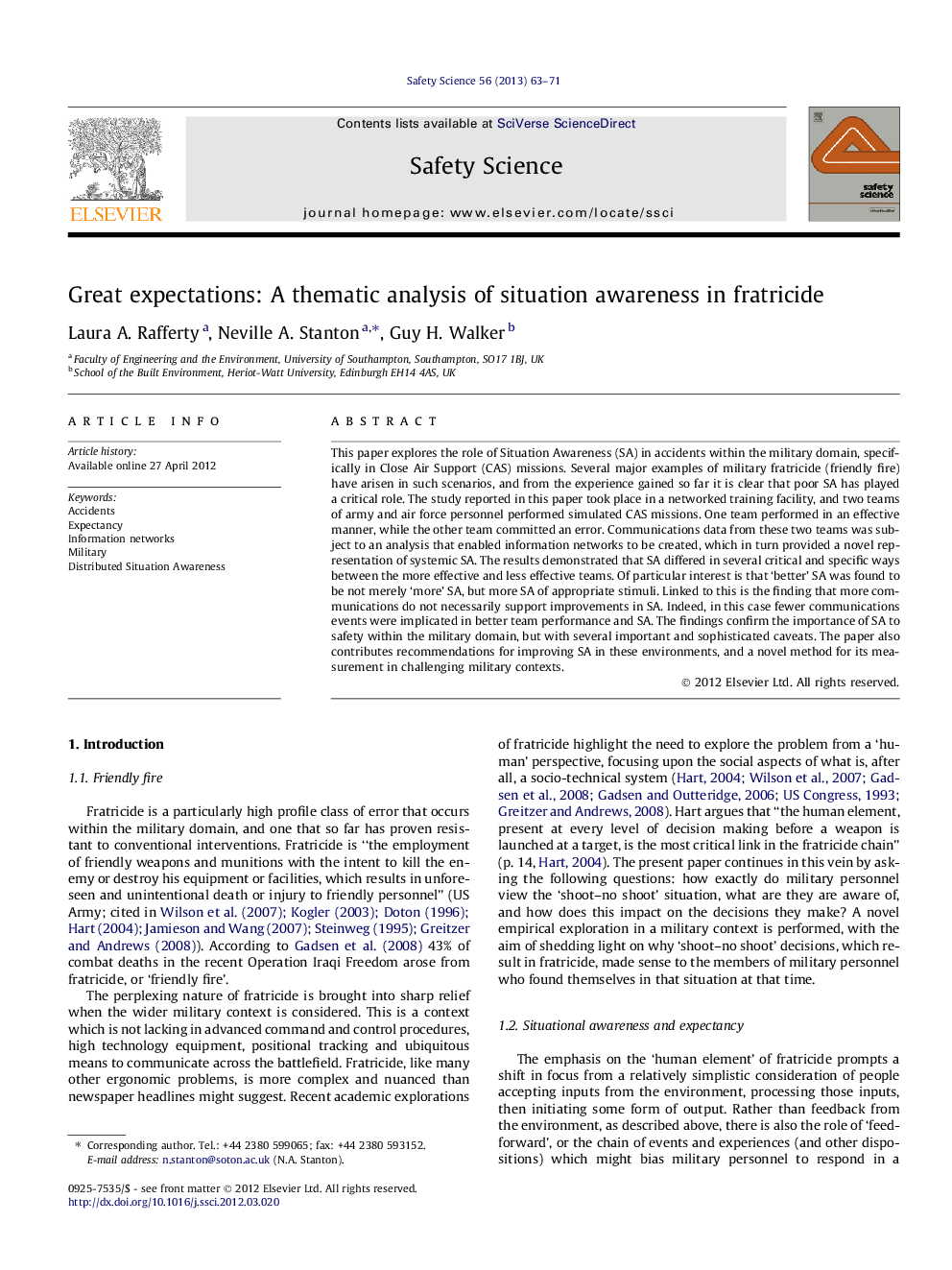| Article ID | Journal | Published Year | Pages | File Type |
|---|---|---|---|---|
| 589267 | Safety Science | 2013 | 9 Pages |
This paper explores the role of Situation Awareness (SA) in accidents within the military domain, specifically in Close Air Support (CAS) missions. Several major examples of military fratricide (friendly fire) have arisen in such scenarios, and from the experience gained so far it is clear that poor SA has played a critical role. The study reported in this paper took place in a networked training facility, and two teams of army and air force personnel performed simulated CAS missions. One team performed in an effective manner, while the other team committed an error. Communications data from these two teams was subject to an analysis that enabled information networks to be created, which in turn provided a novel representation of systemic SA. The results demonstrated that SA differed in several critical and specific ways between the more effective and less effective teams. Of particular interest is that ‘better’ SA was found to be not merely ‘more’ SA, but more SA of appropriate stimuli. Linked to this is the finding that more communications do not necessarily support improvements in SA. Indeed, in this case fewer communications events were implicated in better team performance and SA. The findings confirm the importance of SA to safety within the military domain, but with several important and sophisticated caveats. The paper also contributes recommendations for improving SA in these environments, and a novel method for its measurement in challenging military contexts.
► Distributed Situation Awareness (DSA) is a potential preventative and causal factor in both safety and accidents. ► Appropriate DSA involves both information selection and information integration. ► More effective and less effective team performance within the military was compared. ► More effective, safe performance is correlated with more appropriate DSA.
